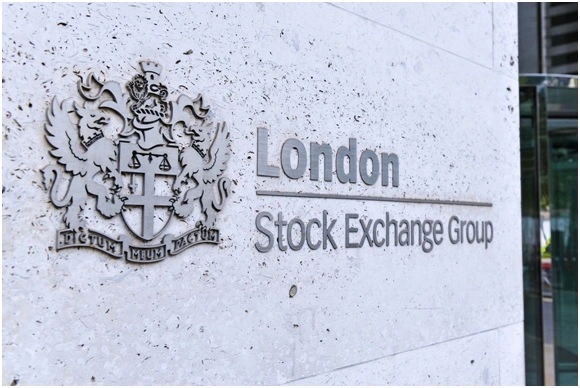The London Stock Exchange (LSE) is one of the primary locations where companies can list their shares, as well as a key location for peer-to-peer trading. This article covers everything you need to know about the LSE and how it impacts the financial markets. Competition among stock exchanges is fierce. However, not all of them are trying to achieve the same things with their services. The LSE, for example, is an association that operates two stock exchanges: The Main Market and The Alternative Trading Service (ATS). Both of these operate independently from one another, but they also share numerous commonalities in terms of who they cater to and how they operate.
What is the London Stock Exchange?
The London Stock Exchange (LSE) is a major global stock exchange based in London. It is the world’s oldest stock exchange, having been founded in 1801. Listed companies account for about 80% of the LSE’s daily trading volume. It is a member-owned institution that is based in the City of London, but with operations in other countries. The LSE is regulated by the Financial Conduct Authority (FCA).
It is the world’s largest venue for trading shares in companies based in the UK and other international countries. It is also the most open exchange, meaning that it allows the exchange of shares between listed companies and private investors. The London Stock Exchange is open for trading from 09:00 am to 03:00 pm (Eastern Standard Time). However, shares listed on the AIM are traded 24 hours a day, five days per week.

History of the London Stock Exchange
The London Stock Exchange (LSE) has been around since the 19th century. It all started when members of the Stock Exchange met at a coffee house in London in 1776 to trade stocks via a system known as ‘open outcry’. In 1801, the world’s first stock exchange was founded in the City of London.
This was the London Stock Exchange. The LSE has a long and important history. However, there were many dramatic events that impacted the exchange’s growth and development over the years. One of the most notable events was the Black Friday stock market crash in 1929 that helped trigger The Great Depression. Another noteworthy event was the start of World War II in 1939.
Official Listing on the LSE
If you own a company and you want to go public, you can list your company on a stock exchange, such as the London Stock Exchange. Here you have two options: The Alternative Investment Market (AIM) and the Main Market. The AIM is a lower-cost, less rigorous listing. It is also a marketplace that is open to everyone. The Main Market is a highly selective, high-cost listing. It is a marketplace that is only open to pre-screened and qualified investors.
The Main Market is the standard by which all other exchanges are judged. If you want to list on the Main Market, you have to jump through many regulatory hoops. It is a selective process that weeds out people by means of high fees. This keeps out fly-by-night companies and gives investors confidence that the companies listed in the main market are reliable.
LSE Electronic Trading Platform (LETP)
The LSE introduced the London Electronic Trading Platform (LETP) in 2005. This system replaced the open outcry method of trading that was first used in the 19th century. It is designed to connect sellers and buyers of securities in a fair and transparent way. The LETP is a computerized order matching system that allows buyers and sellers to make trade orders via computer terminals.
It is a fully automated system that is used to trade equities, corporate bonds, mutual funds, exchange-traded funds (ETFs) and a number of other financial instruments. The LETP is London’s primary financial market for securities trading. It facilitates the execution of trade orders (buy and sell orders) between buyers and sellers. It also provides price transparency and liquidity to the market.
The LETP primarily facilitates trading between London-based brokers and their clients. However, it also allows trading between a broker and a market participant who has a valid account with the LSE.
Alternative Investment Market (AIM)
The AIM is a sub-market of the LSE. It provides a platform for the initial public offering (IPO) of new and growing companies. It also provides a trading platform for smaller companies that cannot meet the listing requirements of the Main Market. Since the AIM is a sub-market, it is regulated by the LSE.
Companies listed on the AIM are subject to the LSE’s listing rules and regulations. They also have to comply with a set of operating rules that are designed to protect investors. The AIM is the world’s first public equity market for smaller companies that are outside the Main Market. Since its inception, the AIM has grown significantly. It now represents approximately 7,000 listed companies and has a market capitalization of approximately $1.5 trillion.
Main Market and ATS
The Main Market and ATS are two trading platforms at the LSE. The Main Market is a trading platform for larger companies with a high market capitalization. The ATS is a trading platform for smaller companies with a lower market capitalization. These are two distinct trading platforms at the LSE that allow for peer-to-peer trading between individual investors and companies listed on the LSE.
LSE and the Financial Markets: After-Hours Trading
The LSE is open for trading from 09:00 am to 03:00 pm (Eastern Standard Time). However, many companies listed on the LSE post the closing price of their shares at a later time. This means that the price of shares is calculated after the official closing time of the LSE. This type of trading is known as after-hours trading.
After-hours trading is a type of trading that occurs after the official closing time of the primary financial market. It also happens before the official opening time of the financial market. After-hours trading is often conducted by large investors. They often trade with other large investors and large institutions. It is designed to minimize changes in the price of a security before the next trading session begins.
The Main Market at the London Stock Exchange
The Main Market is the larger of the two trading platforms at the LSE. It is a trading platform for larger companies with a high market capitalization. The Main Market is a trading platform for larger companies with a high market capitalization. It is also a marketplace that is open to all pre-screened and qualified investors. The London Stock Exchange operates two trading platforms:
The Main Market and the Alternative Trading Service (ATS). Both of these trading platforms are located in the City of London. The Main Market is regulated by the Financial Conduct Authority (FCA). The Main Market is a trading platform for larger companies with a high market capitalization. It is also a marketplace that is open to all pre-screened and qualified investors. The London Stock Exchange operates two trading platforms: The Main Market and the Alternative Trading Service (ATS).
How the LSE Makes Money
The LSE makes money in several ways. First and foremost, the LSE gets a transaction fee for every trade that is exchanged on its trading platforms. For example, if you buy shares of a company listed on the LSE, you pay a fee to the exchange. This fee is known as a transaction fee.
The London Stock Exchange makes money by charging transaction fees when people buy and sell shares listed on their exchange. Of course, not all shares are created equal. There are two major types of shares traded on the LSE: the Main Market and the Alternative Trading Service (ATS).




5 thoughts on “The London Stock Exchange: History, Function, and Impact on Financial Markets”
[…] a separate post, we also cover about London Stock Exchange specifically around it history and impact on the overall financial […]
This web site really has all of the information I needed about this subject and didn’t know who to ask.
Nice article inspiring thanks. Hello Administ .
Thanks so much for the blog article.Really thank you!
Thanks for sharing. I read many of your blog posts, cool, your blog is very good.